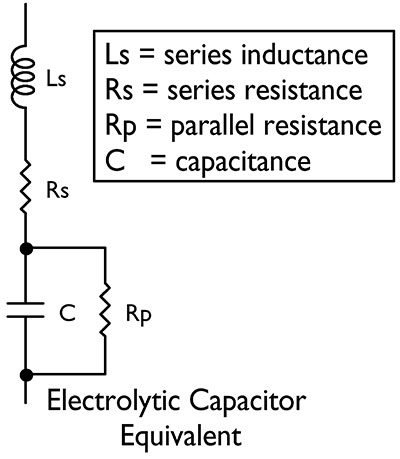With TJ Byers
Specialty Electrolytics
Question:
I've been wondering what makes these capacitors unique:
- Switching power supply electrolytic
- Strobe (flash) electrolytic
I've seen switching power supply capacitors with the same ratings as strobe caps, yet they are listed separately. How come? Is there a difference?
I. L. Griswold WC7H SEAZ
via Internet
Answer:
To begin with, the reason this class of capacitors are called electrolytic has to do with their basic construction. "Ordinary" capacitors are created using to metal plates or metal foil separated by an insulator, typically a polyester plastic. Aluminum electrolytic capacitors — the most common type — use an electrolytic solution and manganese dioxide for the electrolyte.
Electrolytics that are specified as switching power supply capacitors have a lower ESR (equivalent series resistance) than conventional electrolytics. ESR is the amount of resistance the charge/discharge path sees going into the true capacitance (below). Since resistance times current equals heat (power), the lower the ESR, the less the capacitor heats up. As you know, heat is a killer of any electronic component; the less the better.

Another consideration with switching power supplies is series inductance. Inductance impedes the flow of current — current that's needed to reduce power supply ripple. At low frequencies, this inductance can be ignored. But as frequencies approach those of modern-day DC-DC converters (100 kHz and above), it becomes a significant factor. In addition to lower ESR, switching power supply capacitors are constructed for lower series inductance using extra terminals and stacked elements.
Photoflash capacitors, on the other hand, are designed for rapid discharge with minimum losses and without self-destruction. Consequent-ly, the ESR and inductance are extremely low and the internal structure is reinforced to survive very high peak currents in the neighborhood of hundreds or thousands of amps — currents that can quickly deform or destroy less robust components. Note that photoflash capacitors typically have a mediocre temperature rating of 55 °C instead of the 105 °C normally found in consumer electronic equipment, which makes them unsuitable for use in switching power supplies, even though the µF and voltage ratings match.


Comments